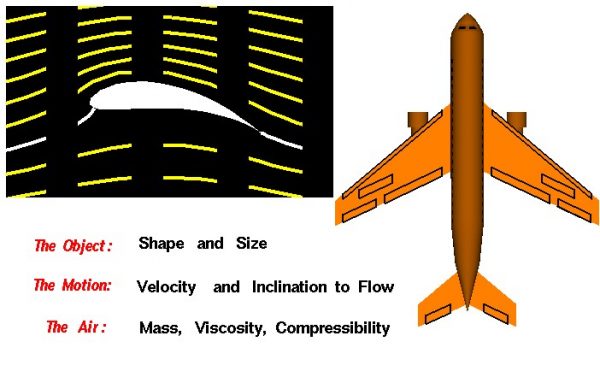Factors That Affect Lift
Lift
All that is necessary to create lift is to turn a flow of air. An aerodynamic, curved airfoil will turn a flow. But so will a simple flat plate, if it is inclined to the flow. The fuselage of an airplane will also generate lift if it is inclined to the flow. For that matter, an automobile body also turns the flow through which it moves, generating a lift force. Lift is a big problem for NASCAR racing machines and race cars now include spoilers on the roof to kill lift in a spin. Any physical body moving through a fluid can create lift if it produces a net turning of the flow.
Factors of Flow
There are many factors that affect the turning of the flow, which creates lift. We can group these factors into(a) those associated with the object, (b) those associated with the motion of the object through the air, and (c) those associated with the air itself:
- Object: At the top of the figure, aircraft wing geometry has a large effect on the amount of lift generated. The airfoil shape and wing size will both affect the amount of lift. The ratio of the wing span to the wing area also affects the amount of lift generated by a wing.
- Motion: To generate lift, we have to move the object through the air. The lift then depends on the velocity of the air and how the object is inclined to the flow.
- Air: Lift depends on the mass of the flow. The lift also depends in a complex way on two other properties of the air: its viscosity and its compressibility.
Lift Equation
We can gather all of this information on the factors that affect lift into a single mathematical equation called the Lift Equation. With the lift equation we can predict how much lift force will be generated by a given body moving at a given speed.

